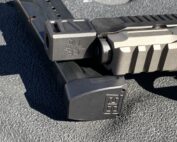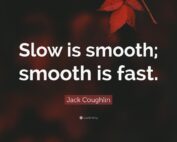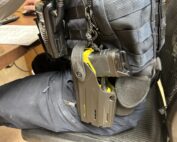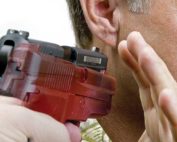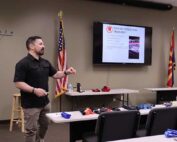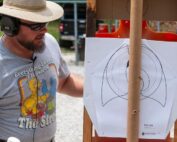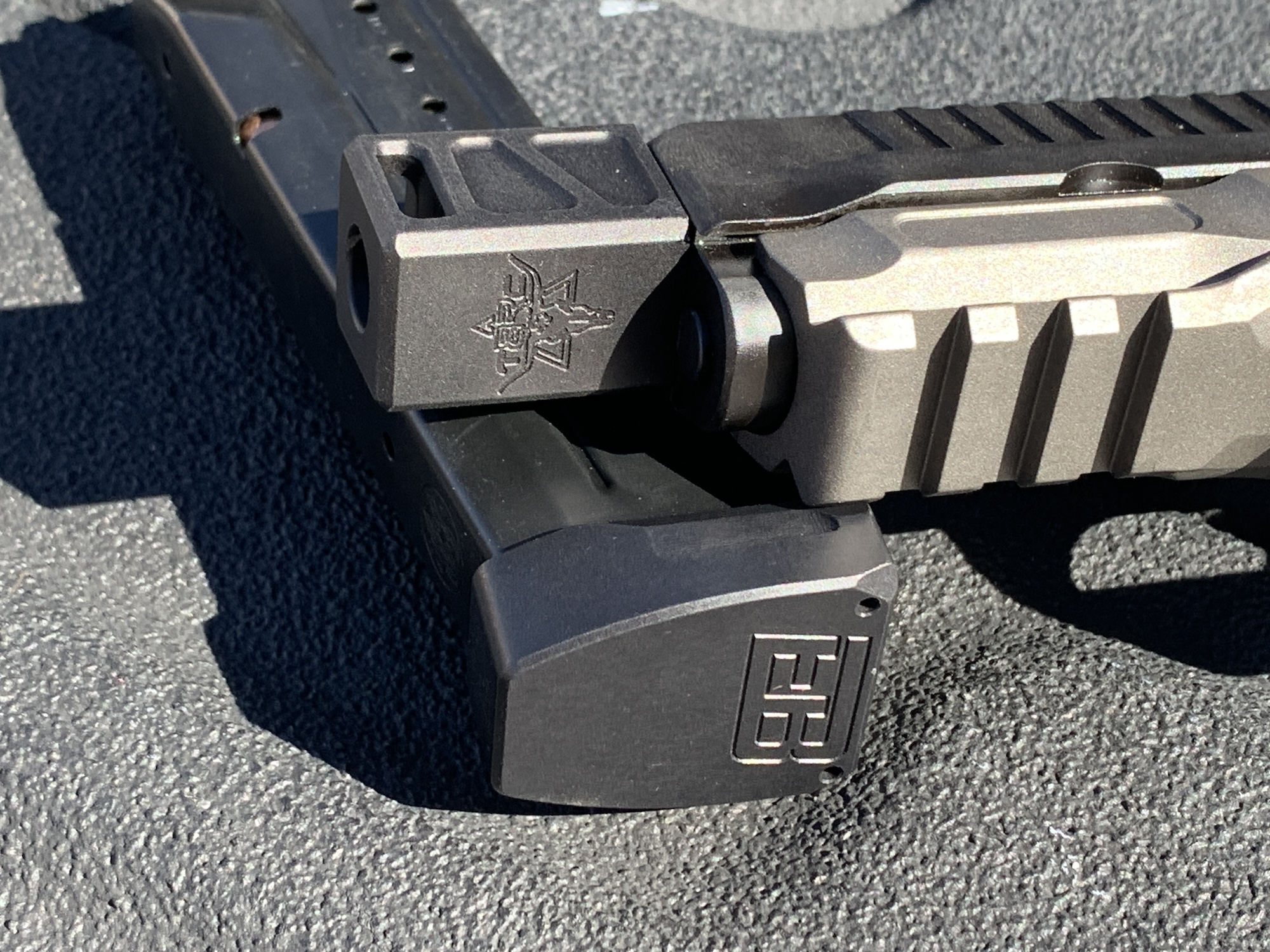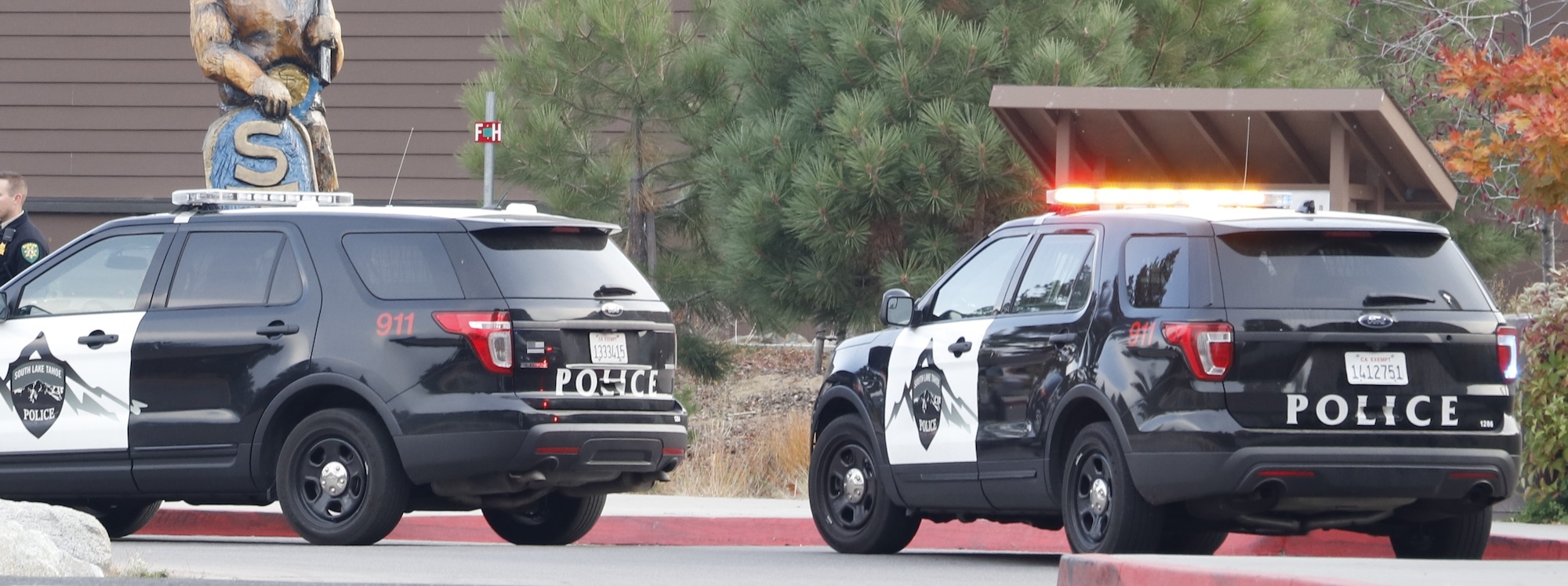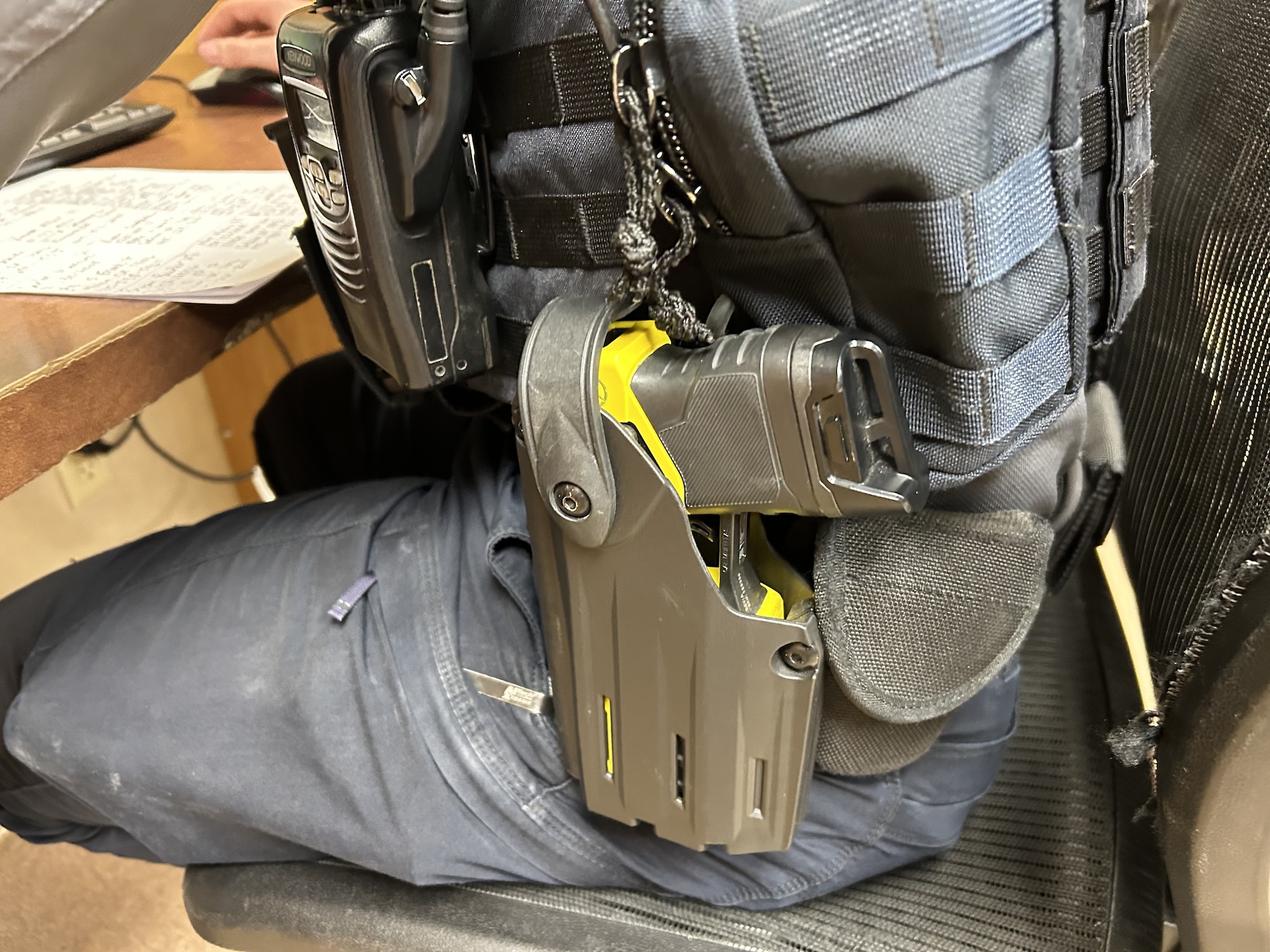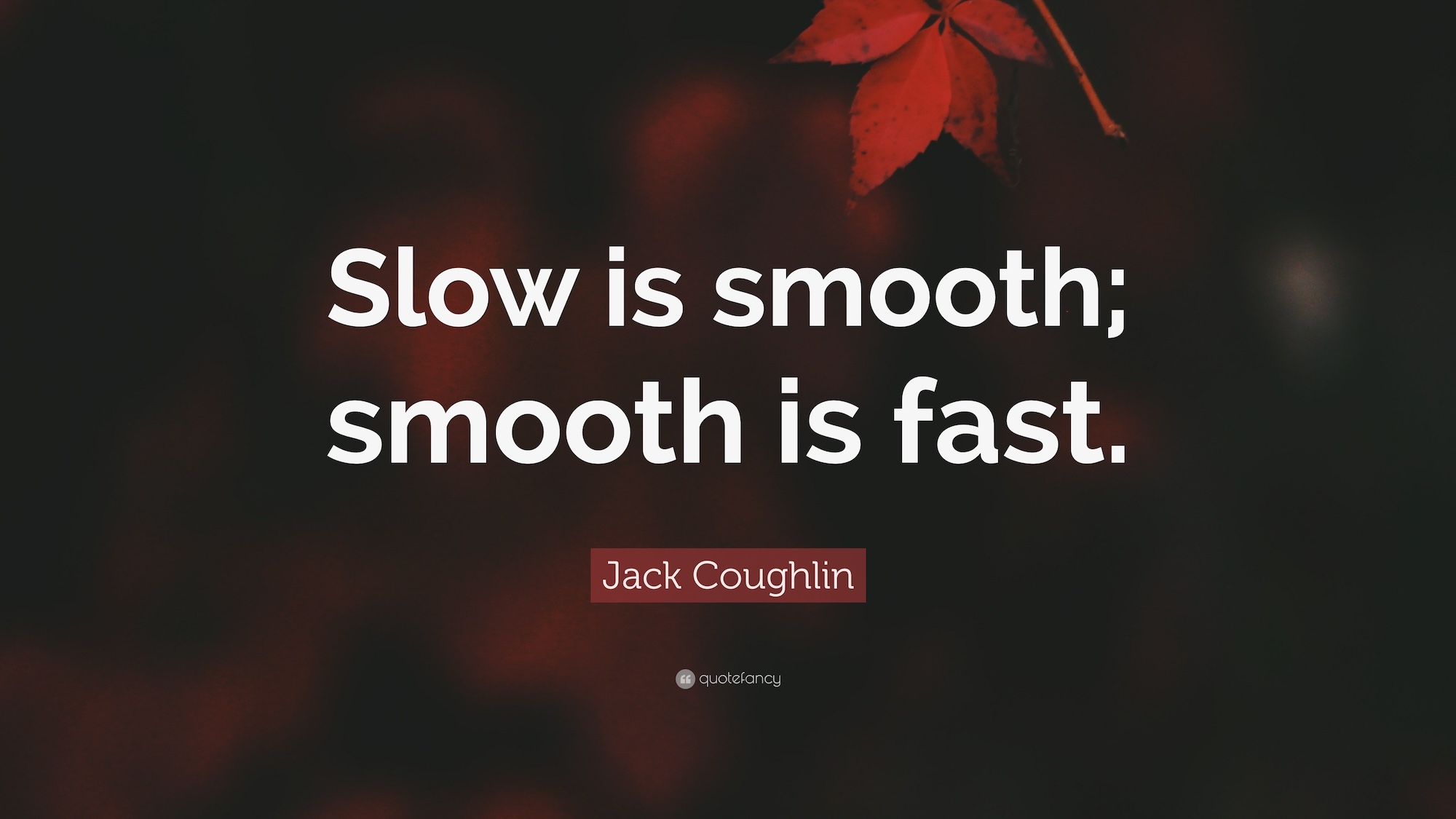
z
(Photo: www.quotefancy.com)
Anytime two or more shooters get together, there will be disagreements, discussions, or differences on something, just like with any other group. The discussions between those shooters can be more spirited because of their emotional attachment to certain phrases.
Let’s look at a few of them, shall we?
Don’t Look At The Gun When You Reload
These days, most of the defensive shooting world teaches shooters to reload pistols and carbines in their “workspace.” It is the area roughly between one’s armpits and eyeballs. Having the magazine well up there means that one can glance at it while beginning to insert and seat the magazine. It makes sense, but why did we (or do some) say, “Don’t look at the pistol when you’re reloading it.”

Gunsite’s training director, Dave Hartman, has brought the pistol up and back into an area where it is in his peripheral vision.
I was re-rereading Greg Morrison’s book The Modern Technique of the Pistol a few years back. When you get to where reloading is covered, photos from the late 80s show the reload being done around the belt line. With that, the warning about not taking your attention off a bad guy and dropping your head down to look at a waist-high pistol makes some sense.
What else was reloaded just above the belt? Your revolver.
There’s nothing wrong with a glance at the magazine well at the instant you are inserting the magazine.
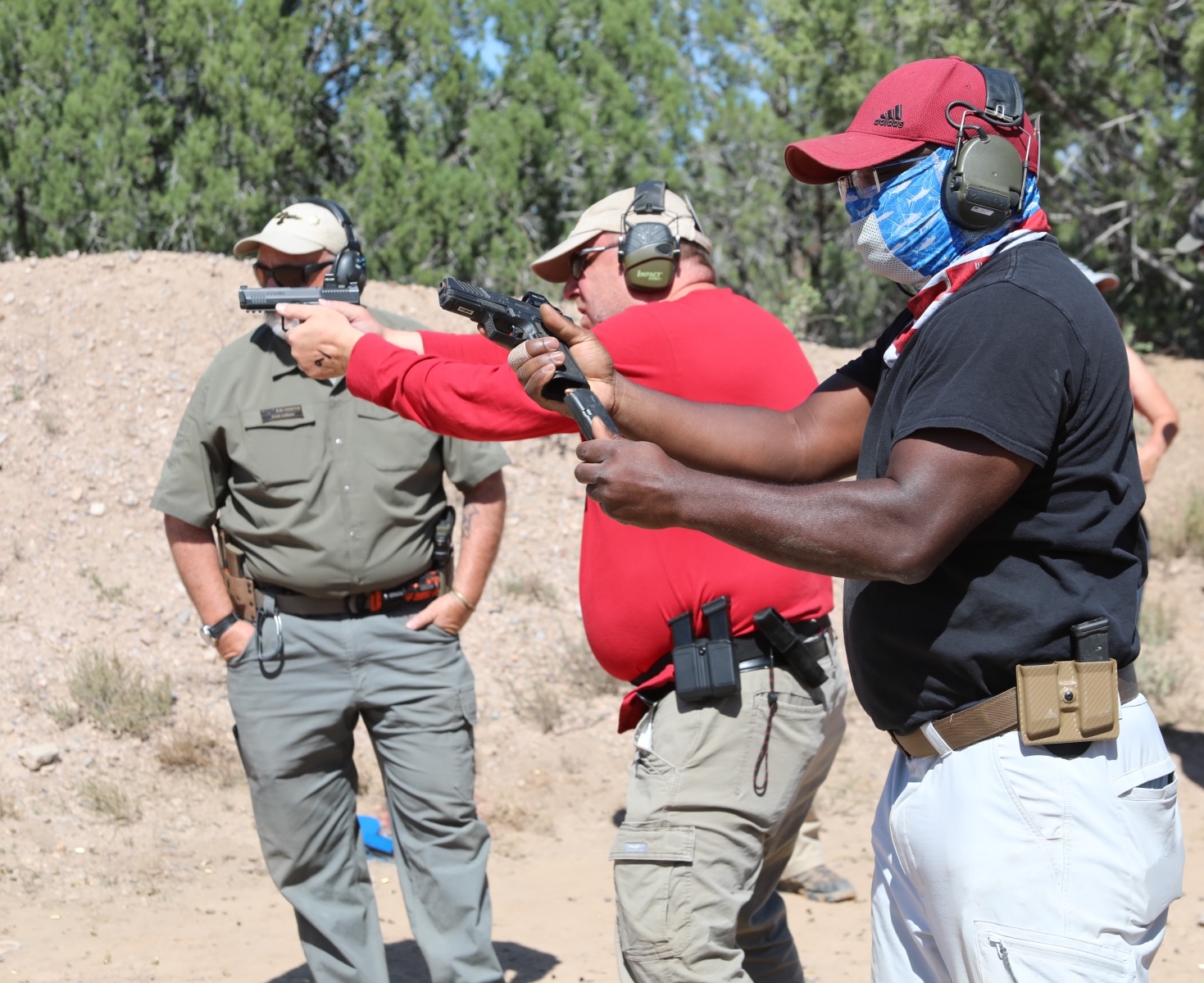
This student is reloading with his pistol high enough up that he can glance at the magazine well if he needs to.
Don’t Look At Your Holster When You Are Re-Holstering
This one is not as cut and dry as the others. There are times when it is completely appropriate to look your pistol or revolver into your holster. And then there are times when you can’t.
Utilizing appendix carry? I’m nearly always going to at least glance into the holster’s mouth to ensure there’s nothing there.
Generally, re-holstering is an administrative task. The problem that caused you to draw in the first place is over with. The bad guy fled, they are gone, and there’s no indication they are coming back – go ahead and re-holster.
Or the situation escalated to the point that deadly force was necessary. You used it, the Bad Guy is no longer a threat, and you are hearing patrol cars getting very close. It might be a good idea to re-holster.
However, that all could change for a uniformed deputy sheriff or police officer. What they thought was about to be a shooting has changed and will now require both hands to control. Time to put the pistol away, and you may not want to take your eyes off the Bad Guy.
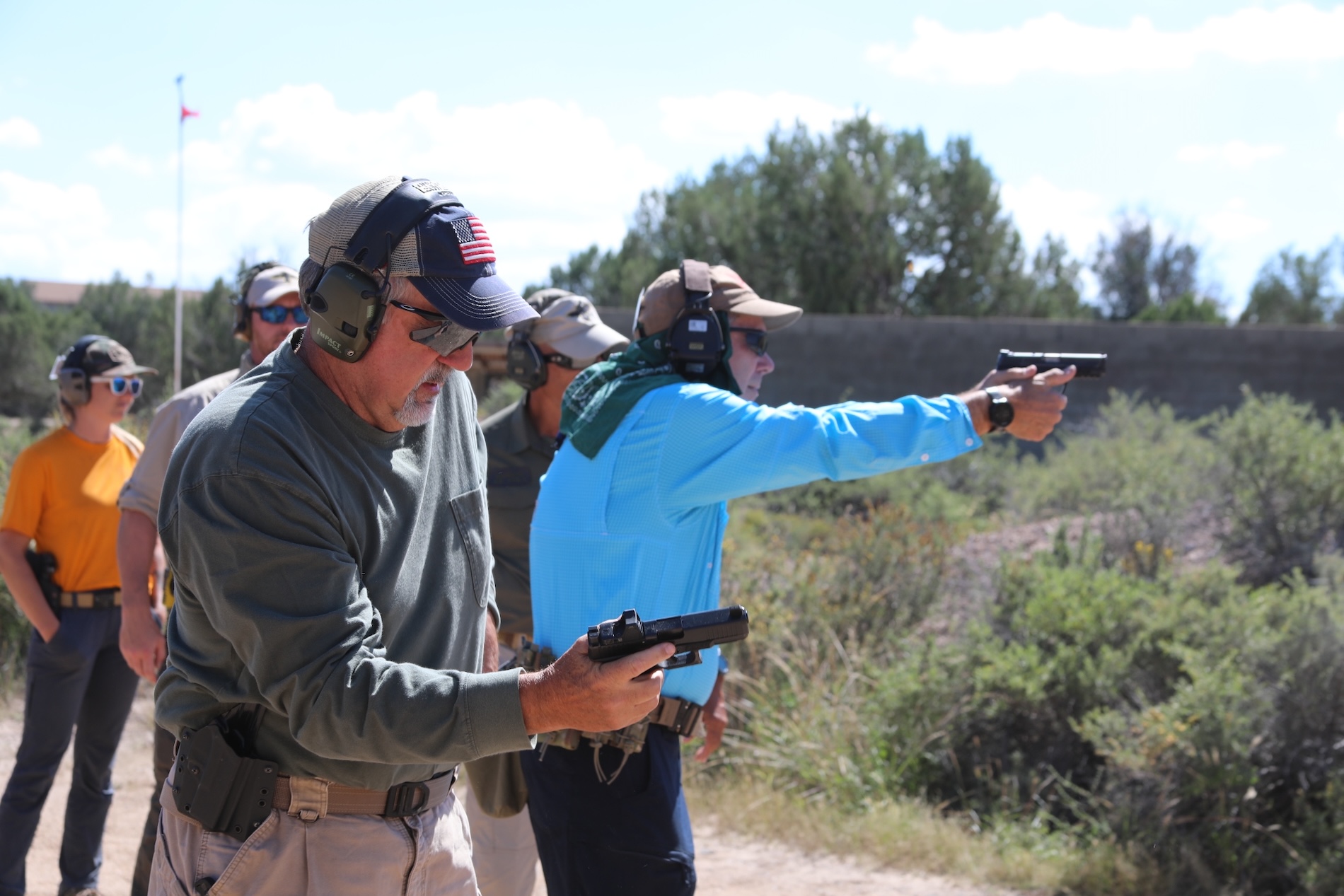
The nearest shooter is reloading with his pistol down by his belt; as a result, his attention and vision are down there rather than down range.
You’re Jerking The Trigger
So, what is going on here? We want the students to isolate their trigger finger enough that they press it to completion without the other three fingers interfering. We can aim the handgun and get a really good sight picture, but if the whole hand becomes involved in the trigger press, we are not going to see the results we want. The involvement of the whole hand is the likely cause of what a lot of us have called jerking in the past.
Isolate your trigger finger’s movement and then concentrate on keeping the pistol stable in one place with both hands, thumbs, and your remaining fingers.
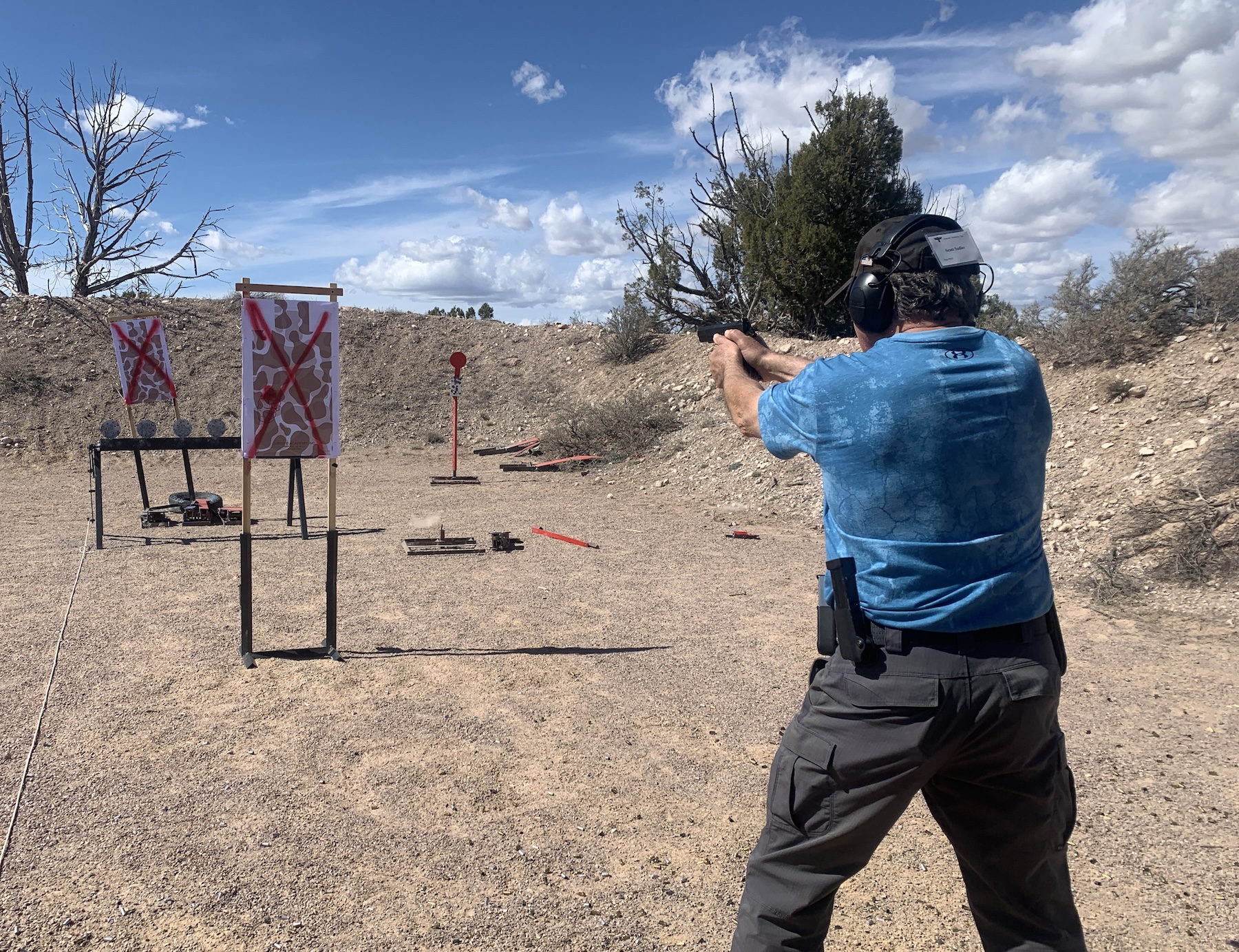
After working the plate rack for time, this shooter is dealing with the addition of No Shoot targets that he cannot hit. It means he has a number of things he must do right.
Slow Down & Get Your Hits
My friend, Steve Fisher, recently gave a solid breakdown on this and how, like others, this is more about mental processes than physical speed. While I like the word “deliberate,” as in “be more deliberate with your trigger press,” there are some people who need to slow down the whole process for a bit, at least until they have developed an understanding of each step.
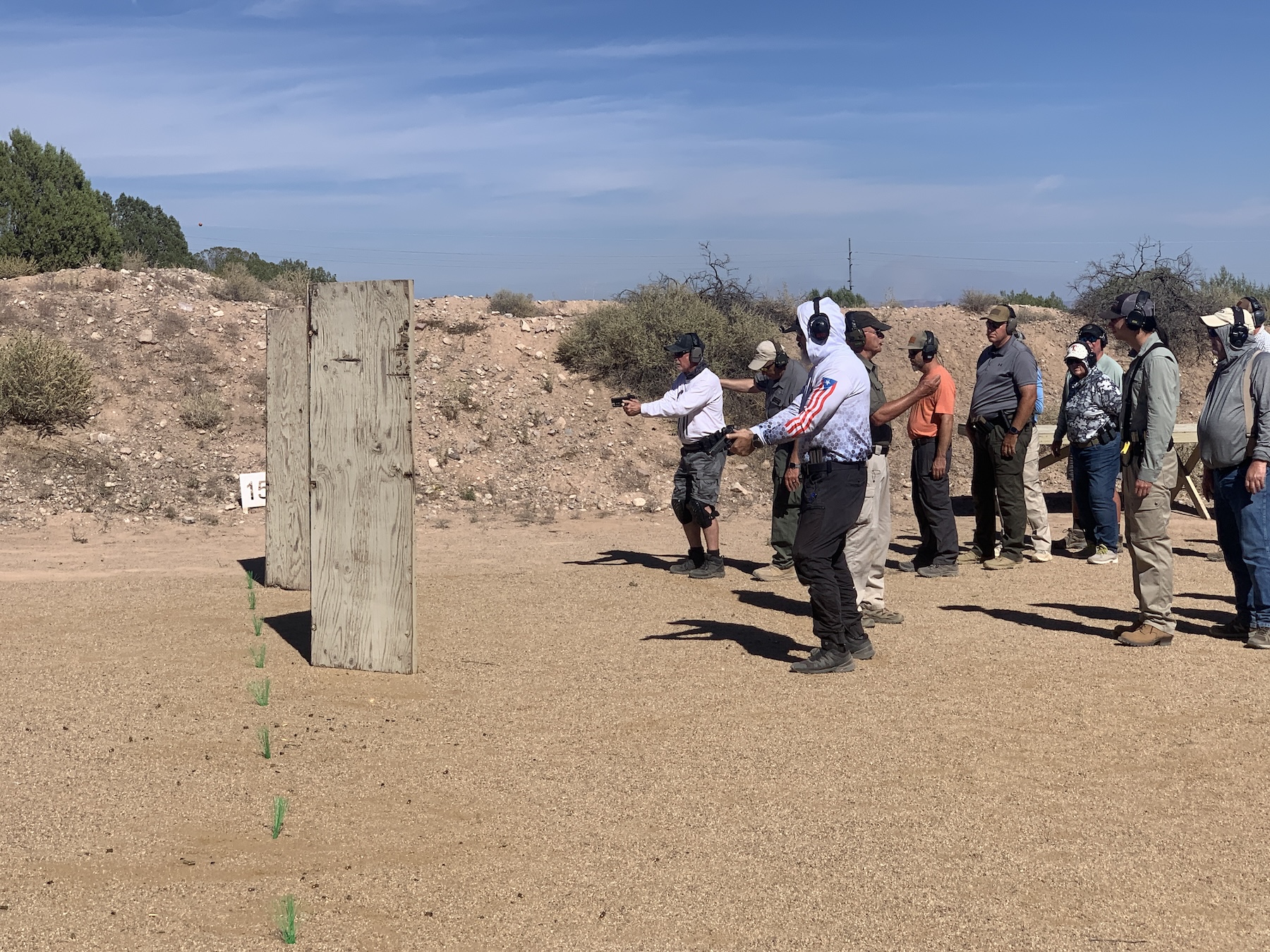
This is not a student-on-student event for speed or time. It is two relays, each learning how to work barricades. Later they try it at speed.
Slow is Smooth, Smooth is Fast
This is one that can send people into orbit. Yes, slow is slow, and fast is fast. Got it.
However, fast may not always be the best way to solidify your ability with a given skill.
How do you learn a new physical skill? Do you break it down into steps and work through each of them? Say, like your presentation? As my BJJ professor has me do in every class?
Or do you Ricky Bobby it right out of the gate? That’s a reference to the Will Farrell movie Talladega Nights about NASCAR if you aren’t familiar with it.
Get the mechanics down first, then start cleaning up your process by knocking off the edges, and as you get there, work on your speed.
I had heard Speed defined as the “economy of motion” as well as the “absence of useless, frenetic motion.”
Engrain the mechanics of the skill in your students, and then, they can hit the metaphoric gas pedal.

Jan is working on several skills here, at the same time – flashlight manipulation, movement, and scanning.
Final Thoughts
As instructors and trainers, what can we do about these? We can all work on being clearer with what we say. Or stop being overly pedantic. Look into where a term or a phrase came from and why it was chosen. If you have a legitimately better term or phrase, look around and find a way to disseminate it widely. Please do that instead of making a Don Quixote-like charge on a lone windmill.
There you have it. Maybe no sacred cows were slain, but a few might have been injured.

